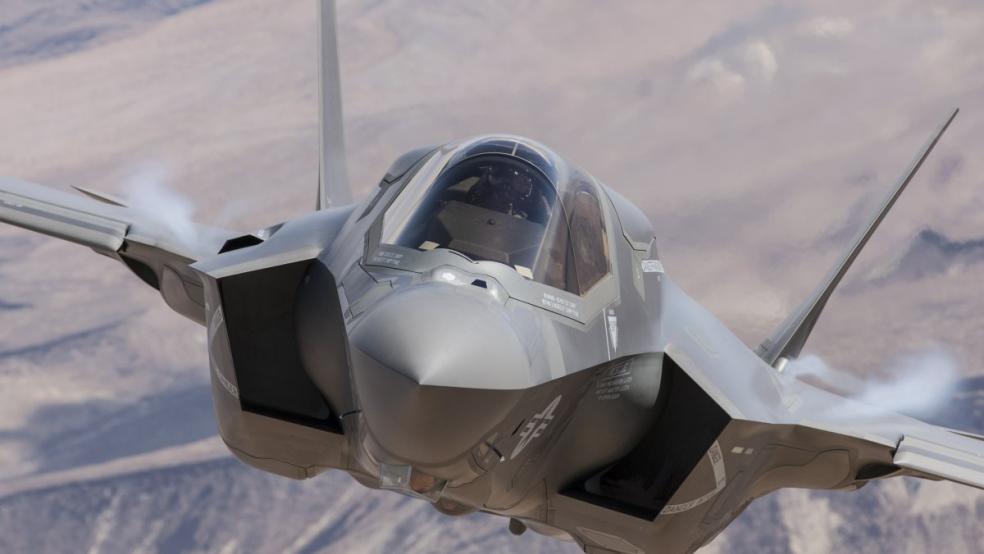There’s good news and bad news for the U.S. Air Force’s version of the troubled F-35 joint strike fighter program. A Pentagon official on Wednesday told the media that the plane’s System Development and Demonstration program is now 80 percent complete. The bad news is that the SDD program has been ongoing since 2001, and officials have identified 419 remaining “deficiencies” that are supposed to be addressed before the Air Force certifies the F-35A’s initial operational capability.
“In the big picture, I would tell you that the program right now is accelerating, growing and changing,” said Air Force Lt. Gen. Christopher C. Bogdan.
Related: More Bad News for the Snakebit F-35
The 419 deficiencies are, he said, “not that many.” The program has already addressed between 700 and 800 deficiencies, he added. “The mark of a good program is you find the problems, you solve the problems and you keep the program moving forward without derailing it,” Bogdan said.
The F-35 program has been plagued with problems for almost as long as it has been in existence.
In recent months, more problems with the plan’s design have been revealed. For example, pilots under a certain weight face the risk of critical injuries if they are forced to eject from the plane, and are therefore barred from flying it.
It has also been revealed that the plane’s massively complicated computer software, which runs to an estimated 8 million lines of code, is still unreliable.
Related: The F-35 Stumbles Again as Test Chief Finds New Weakness -- Cyberattacks
Last month, J. Michael Gilmore, the director of Operational Test and Evaluation Office within the Department of Defense issued a report noting that the testing process is so far behind schedule that the Pentagon will have paid for as many as 500 of the jets – at $100 million or so apiece – before the various services can say for sure that the plane can do what it’s supposed to do.
“These aircraft will require a still-to-be-determined list of modifications” Gilmore wrote. “However, these modifications may be unaffordable for the services as they consider the cost of upgrading these early lots of aircraft while the program continues to increase production rates in a fiscally constrained environment.”
Nevertheless, on Wednesday, Gen. Bogdan was upbeat. “We are making progress,” the he said. “Sometimes it's not as fast as we want. Sometimes it's messy. Sometimes we have setbacks.”
One bright spot in the F-35’s story is that it reached a milestone of sorts recently, as the global fleet of existing planes reached 50,000 total flight hours. In a statement, Bogdan said that while it took nearly eight years to hit that mark, “The next 50,000 hours will be achieved much quicker as we double the size of the F-35 fleet worldwide in the next three years alone.”
Related: How an Italian Air Force F-35 Beat the Pentagon to the Punch
The F-35 was designed to save money by creating a single plane that the various branches of the U.S. armed forces could all use. However, the program has been plagued by cost overruns and delays. In addition, the various services have demanded specific capabilities in the versions of the plane supplied to them, which defeated some of the purpose of creating a uniform fighter jet.
The F-35 is what’s known as a “fifth-generation” fighter, a category of the very newest military aircraft in the world. The only true fifth generation fighter currently in operation is the U.S. F-22. Known as the Raptor, the F-22 was extremely expensive and notoriously unreliable, and the Pentagon has fewer than 200 of them. Congress stopped funding it in 2009, in part because the F-35 was thought to be on the way.





